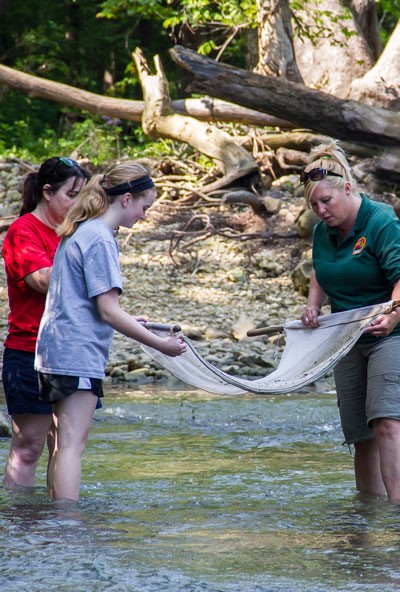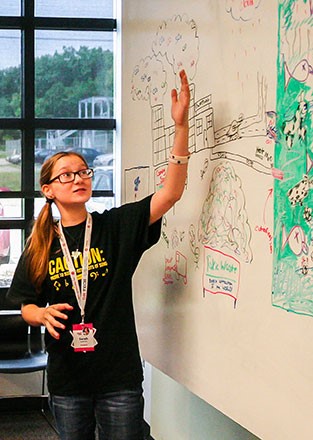This summer, we’re publishing a short series on STEM in the summer, with visits to three STEM programs for girls. Sign up here to read the rest.
“Women have had a place in science,” says Liz Stong of the Ohio Supercomputer Center, “it’s just traditionally been silenced.” Their “Young Women’s Summer Institute” aspires to amplify those voices. This week-long camp challenges middle school girls to get up close and personal with real world science, investigating the health of Ohio watersheds.

Senior Director of Education, Dr. Steve Gordon, founded the program to address a gender gap in extracurricular science education. They had a high school summer institute, but seemingly no young women interested in applying for it.
“There had been research showing that middle school is where girls start to make decisions that put them on the wrong path if they were going to go into science.” It seemed like focusing a science camp on middle schools girls could address the problem. They could reach young women, fostering their curiosity and talents in science through the transition to high school
“It’s evolved over the years, but the idea was to make science fun, provide them role models of women who have been successful scientists, and give them confidence in their own abilities.”
Now in its 16th year, 18 students work in small groups for a single, intensive week. The participants conduct tests on Big Darby Creek, examining samples for dissolved oxygen, water hardness, pH, nitrates, phosphates, and carbon dioxide. “They can actually see how the data are collected,” explains Dr. Gordon, “so they’re not just looking at data; they know where it came from.” From there, the students conduct statistical analyses, molding the raw data into presentable findings.

Science teacher, Paula Williams, has also been involved since the very beginning. “It is really good for them to feel the power that they’re not alone,” though they’re not all identical. “There are other girls that are playing sports and there are girls who are playing instruments and dancing and into reading and writing and want to be an author. It’s so diverse.”
At the end of the week, students present their findings to their assembled parents. “They’re amazed,” says Williams, “They’re absolutely amazed. And many of the parents are scientists.”
“I was worried that I wouldn’t be able to meet anyone I could be friends with,” says Sara Newsome. But it’s not all work. Students have opportunities to meet professionals and graduate students during a career fair, and plenty of time to hang out with each other. “It’s kind of like a big, awkward family now.”
Most importantly, students take ownership over their work. Both during the program and after, they embrace, rather than stifle, their interests. They are unafraid to take charge and share their new knowledge. Thanks to this middle school program, the corresponding high school program has seen a marked increase in female representation. Williams says it best.
“They’re not as willing to let the boys take the lead as they were ten years ago.”
Learn more about the Young Women’s Summer Institute at the Ohio Supercomputer Center here.
Interview took place on July 13th, 2016. Written by Sam Bodary for Battelle Education.